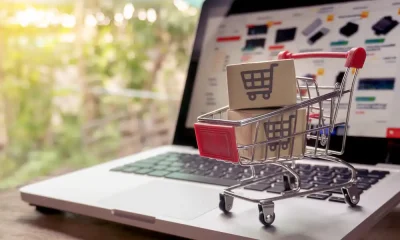Management
16 Signs of a Troublesome Customer

Running your own business or working as a freelancer can be a fun and rewarding experience. Not only do you get to work in a field you truly enjoy, it’s also possible to set your own schedule and work from home. Despite these positive aspects, there are still some drawbacks that go with being your own boss.
Invoicing can be one of the most repetitive and stressful tasks associated with running a business. However, it’s necessary to maintain a positive cash flow.
Getting customers to honor their invoices can be difficult at times. Even if you have completed quality work, customers may still be slow to pay what they owe you. Late payments can seriously affect your income, which in turn can directly affect the success of your business.
Late or unpaid invoices are an unfortunate reality for many businesses regardless of the amount of work they do. Although a majority of customers will most likely pay their invoices on time, there are always those that will fall behind.
Keeping an eye out for the following signs can help you avoid the types of customers that pay their invoices late.
1. Disorganization
If a customer shows signs of being disorganized from the start it is often a good indicator that they may be late when it comes to paying their invoices. Sporadic communication, vague descriptions of the project or products they expect from you, and being generally unorganized are all telltale signs that late payments are a possibility.
Trying to complete an order for this type of customer can be frustrating. They often forget to inform you about specific details needed to complete a project or order. Even more frustrating is that they are likely to treat any invoices issued by you with the same level of disorganization.
2. Unconfirmed Contact Information
Dishonest customers that never intend to pay for your services are the number one type of customer to avoid. Keep an eye out for anything that seems out of place or suspicious when they contact you. Although it can be difficult to tell who is and isn’t intending to rip you off, many would be thieves often leave a trail of suspicious activity.
Be cautious of email addresses that appear suspicious or as if they are spam. Double check contact information and be sure your customers are reachable at any phone numbers or email addresses they may provide.
3. Poor Communication
Customers that only offer sporadic communication can be a red flag. Weeks or months between emails or phone calls may be a clear indicator of how long a customer will wait to pay off an invoice.
Customers that wait long periods of time between correspondences may be trying to stall in order to avoid paying their bills.
4. Indecisive Customers
Customers that have difficulty making up their mind can be difficult to work with. Rather than providing you with specifics about what they want, they instead give you conflicting requests that are impossible to fulfill.
There’s a good chance an indecisive customer will be dissatisfied with the final product or order you provide. When this happens it’s possible they will be reluctant to pay off their invoices.
5. Critical Customers
Customers that are endlessly critical of the services you provide may be difficult to collect payments from. Understandably, some customers will make frequent inquiries about the status of the product or service you provide in order to ensure they receive a quality job.
However, highly critical customers are difficult to please and may be dissatisfied with any job you do regardless of the quality.
6. Small Businesses and Freelancers
If you’re running a small business or working as a freelancer a good portion of your clients are most likely individuals themselves, lacking any sort of staff to handle finances and payments. This type of customer may find it difficult to manage their payment schedule which in turn can lead to late or missed invoices.
7. No Contract
Clients that refuse to sign a contract are a major red flag to avoid. Contracts are used not only to outline the specifications of a job but also to ensure that both sides hold up their end of the agreement. This can include details about how and when a project is due and also the stipulations of payment. A contract is great to have so it can easily be referenced for any payment deadlines that need to be honored.
8. Paying by Check
When it comes to getting paid, the fastest method is usually the best. After completing a project it’s only natural for you to want to be compensated for all the hard work you’ve done as quickly as possible. Payment gateways allow you to receive funds almost instantaneously. Still, it’s good to offer a number of options just in case customers are unable to use a card for payment. There can however be a problem if a customer insists on paying by check. Checks are a slow and outdated method of payment and can be used to rip you off. If a customer doesn’t have the funds to cover the check it can bounce, leaving you high and dry with a completed job and no payment.
With credit cards it’s possible to set up recurring payments which can be helpful when completed multiple jobs for the same customer. Checks however, are a one time source of payment and can require longer waiting periods if they are sent through the mail. Online invoice generators such as Invoice Home provide you with multiple ways of accepting electronic payment so you can avoid checks altogether.
9. Avoidant Customers
In order to buy themselves more time customers can continually give you the runaround by asking for an invoice multiple times or claiming that a check has already been sent. If an invoice has been sent by mail it’s possible it has been lost. After all, things can easily get misplaced. However, if a customer has magically lost the invoice you have sent multiple times then it may be a clear sign they are purposely trying to avoid paying what they owe.
10. Bad Checks
As mentioned before, checks are not the best way to get paid. If a check you’ve received from a customer bounces be cautious about accepting another. Although a customer may have genuinely made a mistake about their available funds,, it’s also possible a customer is just trying to avoid payment entirely.
Despite being a widely used method of payment in the past, checks lack security and can be slow to process. An electronic form of payment is a better option to consider.
11. Requesting Work Without Payment
In order to get an idea of the quality or type of your work you do, clients may ask for a sample project. Referring to projects you’ve completed in the past is a great way to show just what you can accomplish and what customers can expect when they hire you. It can be a problem if a client requests a custom project as a sample. They may just be trying to get free work out of you.
Maintaining a portfolio of past projects that you can refer potential clients to is a safer and more efficient way to show your work. That way you can still show off your work without giving away projects for free.
12. Out of Touch Customers
Often times customers may not truly understand the kind of work you do and the effort that goes into it. They may expect fast results and cheap prices for large projects. Out of touch customers can be difficult to work with since they often expect the impossible right away at bargain prices.
Trying to explain that quality work may not be possible in a single day can be a bit of a challenge if the customer has already made up their mind about a specific project.
13. Returned Letters and Notices
It never hurts to give a gentle nudge to customers that are overdue on their payments. Reminders can be sent to customers by email or through the mail. If a customer continues to be unresponsive after several attempts, or if your notices are being returned, it may be a clear indicator that a customer intends to skip out on paying.
14. Refused Work
Once you’ve completed a project and sent it to a client they may attempt to claim it doesn’t meet their requirements. This is a classic way for shady customers to avoid paying for the work you’ve done. When this happens it’s best to refer to the contract that you and the customer originally agreed on. As long as you’ve fulfilled your end of the bargain and made sure to document your work a customer will have a harder time avoiding payment without escalating the situation.
15. Deadline Extensions
At the beginning of the project you and your client should have agreed on the details concerning payment, due dates, project guidelines, etc. Having rules in place will help ensure that you have the budget and time to manage your projects. If a client asks for multiple extensions it can be an indication that they don’t intend to follow the rules agreed upon prior to the start of the project.
It is understandable that a customer may need an extension. After all, life is unpredictable and they may encounter circumstances that make it difficult for them to pay what they owe on time. However, at the end of the day you still need to receive compensation for the work you’ve done so it’s best to be wary of customers that continue to ask for extensions.
16. Indecisive Clients
If a customer is hesitant to commit to a project it’s best not to pressure them. Finding new jobs is obviously a great way to grow your business. However, if a client is not fully on board it may lead to problems later on. They may be perpetually unsatisfied with your work, ignore your messages, or reluctant to pay on time.
Steps for dealing with troublesome customers
To ensure that your invoices are paid be sure to follow these simple steps.
- Select your clients wisely
- Ask for payment or at least partial payment upfront
- Implement late fees
- Avoid releasing the full project until a client indicates they intend to pay
- Maintain a contract in case legal action needs to be used as a last resort
- Try to keep loses at a minimum









